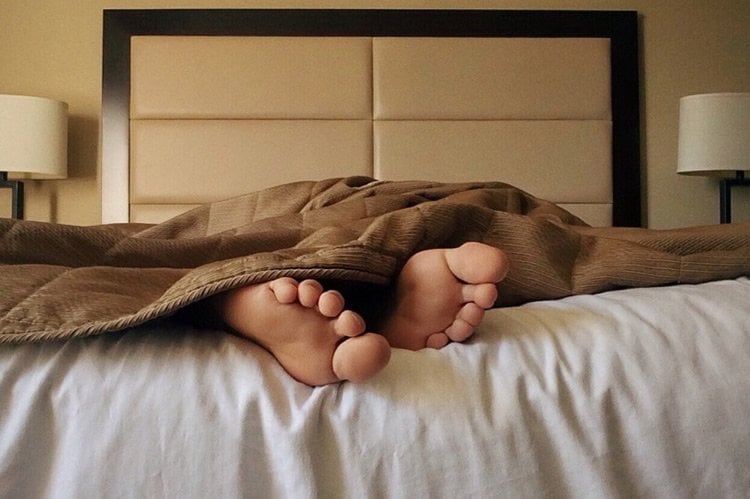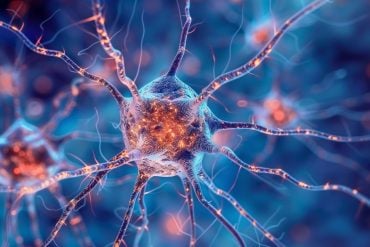Summary: Early risers take less time to complete memory related tasks than night owls, but tend to make more mistakes, a new study reports.
Source: National Research University Higher School of Economics.
It has been known for a long time that early risers work less efficiently at night than night owls do. But researchers from the Higher School of Economics and Oxford University have uncovered new and distinctive features between the night activities of these two types of individuals. At night, early risers demonstrate a quicker reaction time when solving unusual attention-related tasks than night owls, but these early risers make more mistakes along the way.
Sleep deprivation and a relative increase in the time spent awake negatively impact the brain’s attention system. Nicola Barclay and Andriy Myachykov conducted a study that is the first experiment investigating the influence of sleep deprivation on people with different chronotypes. Specifically, the researchers found out how an increase in time spent awake affects the attention system of early risers and night owls. The study is available in the journal Experimental Brain Research.
Twenty-six volunteers (13 male, 13 female) with an average age of 25 participated in the study. Participants were required to stay awake for 18 hours, from 8:00 a.m. to 2:00 a.m., and adhere to their normal routine. At the beginning and end of their time spent awake, the participants completed an Attention Network Test (ANT) and a Morningness-Eveningness Questionnaire to help assess their chronotype.
The researchers did not find any important differences between the results of the ANT test the early birds and night owls completed in the morning, but the evening test showed a more pronounced contrast. The early birds completed tests quicker than the night owls, which was a rather unexpected and contradictory outcome, though the researchers did find an explanation for this. This may have been because of the different approaches the two groups took towards managing the task. Evening people tended to take a more serious approach when it came to tasks requiring more time and attention during their favorite hours, i.e., in the late evening or at night. ‘To deal with the most difficult test – resolving a conflict of attention — it was necessary not only to concentrate on the main visual stimulus, but at the same time to ignore accompanying stimulus that distract from the core task,’ Andriy Myachykov explains. Completion of this task requires increased concentration. ‘An interesting fact is that although night owls spent more time finishing than early birds, their accuracy in completing the task was higher,’ the researcher added.

Overall, the evening people turned out to be slower but more efficient compared to the early risers, according to the second ANT taken at 2:00 a.m. after 18 hours of being awake. ‘On the one hand, it’s known that night owls are more efficient in the late hours, but how this influences the speed and accuracy with which attention-related tasks are completed remains unclear. Our study demonstrated how night owls working late at night “sacrifice” speed for accuracy,’ explained Andriy Myachykov.
The results of this study could challenge the education system and human resources management in certain areas. For pilots, air traffic controllers, drivers, etc., attention, the ability to deal with large sets of data, and reaction time are all very important. During emergencies, these features could play a vital role. The results of this study could also be very useful for people who work night shift.
Source: Elena Sharova – National Research University Higher School of Economics
Image Source: NeuroscienceNews.com image is adapted from the National Research University Higher School of Econmonics press release.
Original Research: Full open access research for “Sustained wakefulness and visual attention: moderation by chronotype” by Nicola L. Barclay and Andriy Myachykov in Experimental Brain Research . Published online September 13 2016 doi:10.1007/s00221-016-4772-8
[cbtabs][cbtab title=”MLA”]National Research University Higher School of Economics. “Why Morning People Should Not Work at Night.” NeuroscienceNews. NeuroscienceNews, 16 December 2016.
<https://neurosciencenews.com/morning-people-night-work-5758/>.[/cbtab][cbtab title=”APA”]National Research University Higher School of Economics. (2016, December 16). Why Morning People Should Not Work at Night. NeuroscienceNews. Retrieved December 16, 2016 from https://neurosciencenews.com/morning-people-night-work-5758/[/cbtab][cbtab title=”Chicago”]National Research University Higher School of Economics. “Why Morning People Should Not Work at Night.” https://neurosciencenews.com/morning-people-night-work-5758/ (accessed December 16, 2016).[/cbtab][/cbtabs]
Abstract
Sustained wakefulness and visual attention: moderation by chronotype
Introduction
Attentional networks are sensitive to sleep deprivation and increased time awake. However, existing evidence is inconsistent and may be accounted for by differences in chronotype or time-of-day. We examined the effects of sustained wakefulness over a normal “socially constrained” day (following 18 h of sustained wakefulness), following a night of normal sleep, on visual attention as a function of chronotype.
Methods
Twenty-six good sleepers (mean age 25.58; SD 4.26; 54 % male) completed the Attention Network Test (ANT) at two time points (baseline at 8 am; following 18-h sustained wakefulness at 2 am). The ANT provided mean reaction times (RTs), error rates, and the efficiency of three attentional networks—alerting, orienting, and executive control/conflict. The Morningness–Eveningness Questionnaire measured chronotype.
Results
Mean RTs were longer at time 2 compared to time 1 for those with increasing eveningness; the opposite was true for morningness. However, those with increasing morningness exhibited longer RT and made more errors, on incongruent trials at time 2 relative to those with increasing eveningness. There were no significant main effects of time or chronotype (or interactions) on attentional network scores.
Conclusion
Sustained wakefulness produced differential effects on visual attention as a function of chronotype. Whilst overall our results point to an asynchrony effect, this effect was moderated by flanker type. Participants with increasing eveningness outperformed those with increasing morningness on incongruent trials at time 2. The preservation of executive control in evening-types following sustained wakefulness is likely driven by differences in circadian phase between chronotypes across the day.
“Sustained wakefulness and visual attention: moderation by chronotype” by Nicola L. Barclay and Andriy Myachykov in Experimental Brain Research . Published online September 13 2016 doi:10.1007/s00221-016-4772-8






